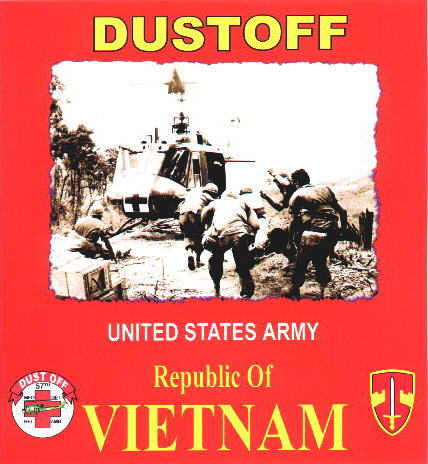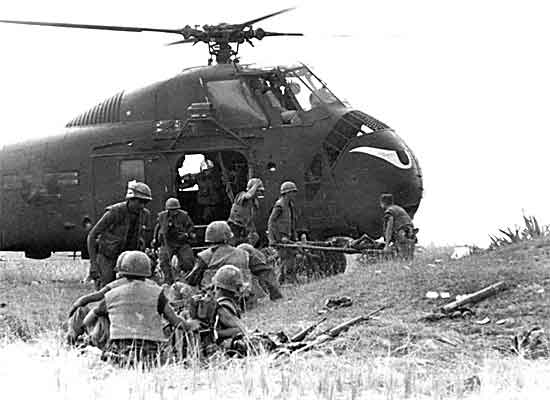|
Army Combat Medics

Brief history of the Medical Corps
The Medical Service Corps traces its beginnings to the establishment of an Apothecary General during the American Revolution, and the creation of the Ambulance Corps and US Army Storekeepers in the Civil War. It was during the Civil War that Surgeon Jonathan Letterman, Director of the Army of the Potomac, realized a need for an integrated medical treatment and evacuation system with its own dedicated vehicles, organizations, facilities, and personnel. The Letterman plan was first implemented in September 1862 at the battle of Antietam, Maryland, and has continued as the basis of Army medical doctrine ever since.

The next major development of the Medical Service Corps occurred in World War I. The Army’s requirement for medical and scientific specialty officers to support combat operations resulted in the creation of two temporary components: the US Army Ambulance Service established on 23 June 1917 as a descendent of the Ambulance Corps, and the Sanitary Corps, established on 30 June. Today the Medical Service Corps mirrors the Sanitary Corps, which quickly expanded to nearly 3,000 officers during World War I. The Sanitary Corps enabled the Medical Department to make available to itself a group of officers commissioned in specialties which were at the forefront of the medical technology of the day. Officer’s of the Sanitary Corps served in medical logistics, hospital administration, patient administration, resource management, x-ray, laboratory engineering, physical reconstruction, gas defense, and venereal disease control. They were dedicated members of the medical team that enabled American generals to concentrate on enemy threats and not epidemic threats.

Between World War I and World War II. it became apparent that the Army needed a permanent source of medical administrative specialty officers. This led to the establishment of the Medical Administrative Corps in June 1920. The Medical Administrative Corps expanded to include a variety of administrative positions and freed the physicians, dentists, and veterinarians for medical care responsibilities. Following World War II, Congress established a permanent component in the Army for medical administrative and scientific specialty officers. On 4 August 1947, Congress created the Medical Service Corps. For the first time, the Medical Department had a permanent home for both its administrative and scientific specialty officers. Since 1947, U.S. military actions have demonstrated the efficiency of that decision.

The Medical Service Corp have been important members of the U.S. military medical support team for combat operations in Korea, the Dominican Republic, Vietnam, Grenada, Panama, and Iraq. The story of the Army’s operations in Vietnam would not be complete without mention of the magnificent record of the evacuation helicopter pilots, who carried on in the tradition begun in the Civil War.
World War II and the Combat Medic
It wasn’t any different to be killed in World War II then it was during the Civil War or World War I. However, if the World War II GI was wounded by a bullet, shrapnel or fallen by a disease such as malaria, without killing him, his chances for survival were much greater then his ancestor in the Civil War. During the Civil War, 50 percent or more of the men admitted to hospitals died, during World War I, it was 8 percent, World War II, 4 percent.

During World War II drugs such as sulfa (Sulfanilamide) and penicillin were discovered and advanced surgical techniques were introduced to make these improvements possible, but the first reason for such successes in improving the mortality rate was the speed with which wounded men were treated. It began with the frontline combat medics. In the beginning of the war at training camps, medics had been mildly despised because many of them were conscientious objectors and often ridiculed. Sometimes called "Pill Pushers" or worse. But in combat they were loved, respected and admired. Medic Buddy Gianelloni recalls, ‘Overseas it becomes different. They called you medic and before you know it, it was Doc. I was 19 at the time."

The main objective of the medic was to get the wounded away from the front lines. Many times this involved the medic climbing out from the protection of his foxhole during shelling or into no-man’s-land to help a fallen comrade. Once with the wounded soldier, the medic would do a brief examination, evaluate the wound, apply a tourniquet if necessary, sometimes inject a vial of morphine, clean up the wound as best as possible and sprinkle sulfa powder on the wound followed by a bandage. Then he would drag or carry the patient out of harms way and to the rear. This was many times done under enemy fire or artillery shelling. In most cases, the Germans respected the Red Cross armband.
Evacuation of Wounded During World War II
The evacuation process of the wounded during World War II is best described by Pfc. Keith Winston, a combat medic during WW2 for the 398th Infantry Regiment, 100th Infantry Division. He explains the evacuation process in a letter to his wife during the war;

"You asked me to describe the exact function of the Aid Station. First let me tell you how evacuation works: A boy gets hurt on the line. Within a minute or less a telephone message is sent back to our forward Aid Station, a distance of 300 to l000 yards from the front where a Sgt. and 4 litter-bearers are always on hand. They rush right up to thc line with a litter. During this time, thc Company in which the casualty is a member, has their Aid-man administering first-aid on the spot—usually consisting of stopping the bleeding with Sulfanilamide powder, bandaging and giving wound pills internally.

By that time, another litter team is there and carries the casualty to thc nearest point where a jeep can travel--anywhere from 25 to 3000 yards, depending on conditions. The injured boy is then rushed to the Aid Station, one to three miles behind the line. Here the physician removes the first-aid bandage, makes a proper diagnosis and applies a more permanent bandage, administers blood plasma if needed, and in severe cases, gives morphine; makes the patient comfortable, warm, gives coffee, etc. Whereupon he's rushed back to a point known as Clearing Company, pretty far in thc rear--this time by a comfortable ambulance which stands ready for action at thc Aid Station's door.

Now--here, if the wound requires it, he's given emergency operation or attention. This place is well-staffed and well-equipped. Then the casualty is taken by ambulance to an Evacuation hospital further back where first-class attention is administered. If thc case is one whereby the wound or casualty is so severe and he won't get better very soon, he's shipped back even further to a General Hospital, and eventually back to the States. Reason for the continual moves? One of room. As the patient warrants a further move back, he leaves space for another boy, and needed room is of the essence. The Aid Station has no beds. Its job is the most important--to evacuate the wounded boy from place of incident to the rear, after essential treatment is administered to save his life. The well-equipped rear station the soldier and bandage him with the skill that is possible only in a quiet hospital".

The combat medic was one of the unsung heroes of World War II. He lived with the front line infantrymen and was the first to answer a call for help. He gave first aid to his wounded comrades and helped them out of the line of enemy fire. More often than not, he faced the enemy unarmed and was the foundation of the medical system with hundreds of thousands of surgeons, nurses, scientists, and enlisted medics.

As stated by Stephen Ambrose, "It was the universal opinion of the frontline infantry that the medics were the bravest of all".
FReeper Foxhole Armed Services Links
 
   |











